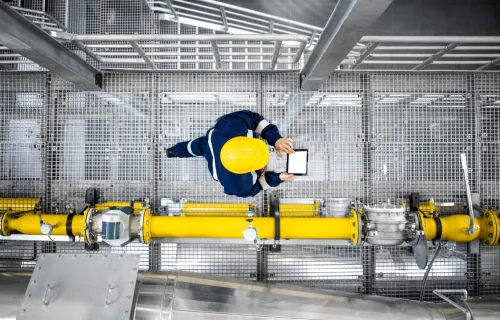The ability to see the precise minute my hot pizza will arrive, get real-time breaking news, and receive same-day groceries has set the bar for instant information expectancy. This has been amplified further during the stay-at-home requirements resulting from the pandemic.
In addition to managing new demands during the crisis, utilities also must deal with these heightened digital expectations, such as when notifying customers when a repair crew will fix a fallen pole or defective transformer. However, the constraints of disparate systems and data along with manual processes can result in a lower perception of performance than reflected in utilities’ superior reliability metrics—like SAIDI (System Average Interruption Duration Index), SAIFI (System Average Interruption Frequency Index), CAIDI (Customer Average Interruption Duration Index), etc.
Fortunately, robotic process automation (RPA) can help by emulating human inputs to complete a business process.
Fewer turndowns, lower costs, better service
As an example, a utility recently struggled to update a residential customer when a field technician could not complete a service ticket, giving a reason code of “No Adult Present.” The utility provided a large window for the service call and the customer narrowly missed the technician. Unfortunately, the customer had to wait a few more days for the next available appointment.
By using an RPA-driven dispatch system, however, the utility could instead have notified the customer when the technician was en route, without having to monitor or update the status manually. The resulting experience not only would be more favorable for the customer, but also for the utility by eliminating avoidable “turndowns,” reducing operation and maintenance costs, and improving customer relations.
High volume, data-heavy processes
Increasingly, utilities are turning to RPA to efficiently and effectively meet the demands of customers and regulators, and support data-driven decisions. In the 2020 CGI Client Global Insights, utilities executives indicated some progress with RPA project completion: 18% compared to 15% in 2019.
As a foundation for more advanced automation and analytics, RPA is most effective in accelerating high-volume and data-heavy processes. By handling tasks that do not require human intervention, RPA also frees employees to focus on higher-value work. RPA can be successfully utilized to rapidly bridge gaps in exstisting process integrations.
RPA + EAM saves time and reduces errors
Several utilities have found that by combining RPA with enterprise asset management (EAM) solutions they can automate time-consuming and error-prone business processes to achieve much greater efficiency and accuracy than any manual process. This combination creates unique capabilities for stakeholders. From simple user profile creation to more complex conditional processes such as automated filtering of short-cycle, non-scheduled work for Job Jar assignments, RPA helps utilities meet expedited timelines with effective results.
Automation of data-heavy manual processes also creates a strategic advantage for utilities by enabling them to add value across several business channels. As more utilities progress on their digital journey, RPA provides a viable starting point toward more advanced, autonomous processes (such as using artificial intelligence and computer vision which emulate full human cognition), without significant initial investments. Additionally, RPA’s flexibility and scalability help utilities realize bottom-line increases from process improvements, with predictable ROI.
The RPA difference
Unlike traditional system integration approaches, which can be intrusive and labor intensive, RPA can be deployed rapidly and efficiently to bridge gaps. Even within complex system process integrations, RPA can be used successfully in more fluid environments where traditional integration approaches are not feasible.
CGI has successfully implemented several RPA technologies for clients paired with our CGI OpenGrid360 solution suite, which is designed to help utility network owners and operators improve data insight and accelerate innovation.
Please contact me if you would like to explore how RPA can help you improve outcomes and increase value for your stakeholders.





